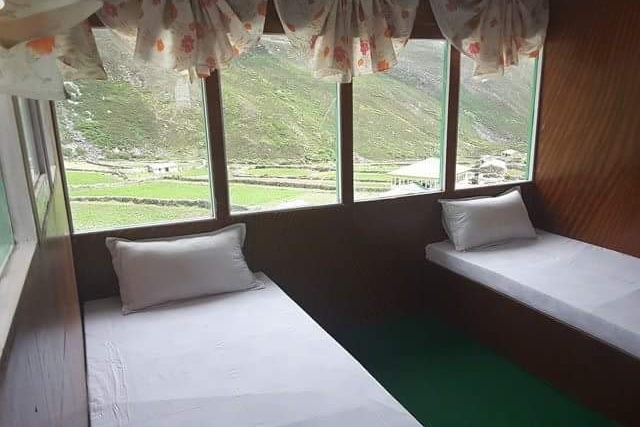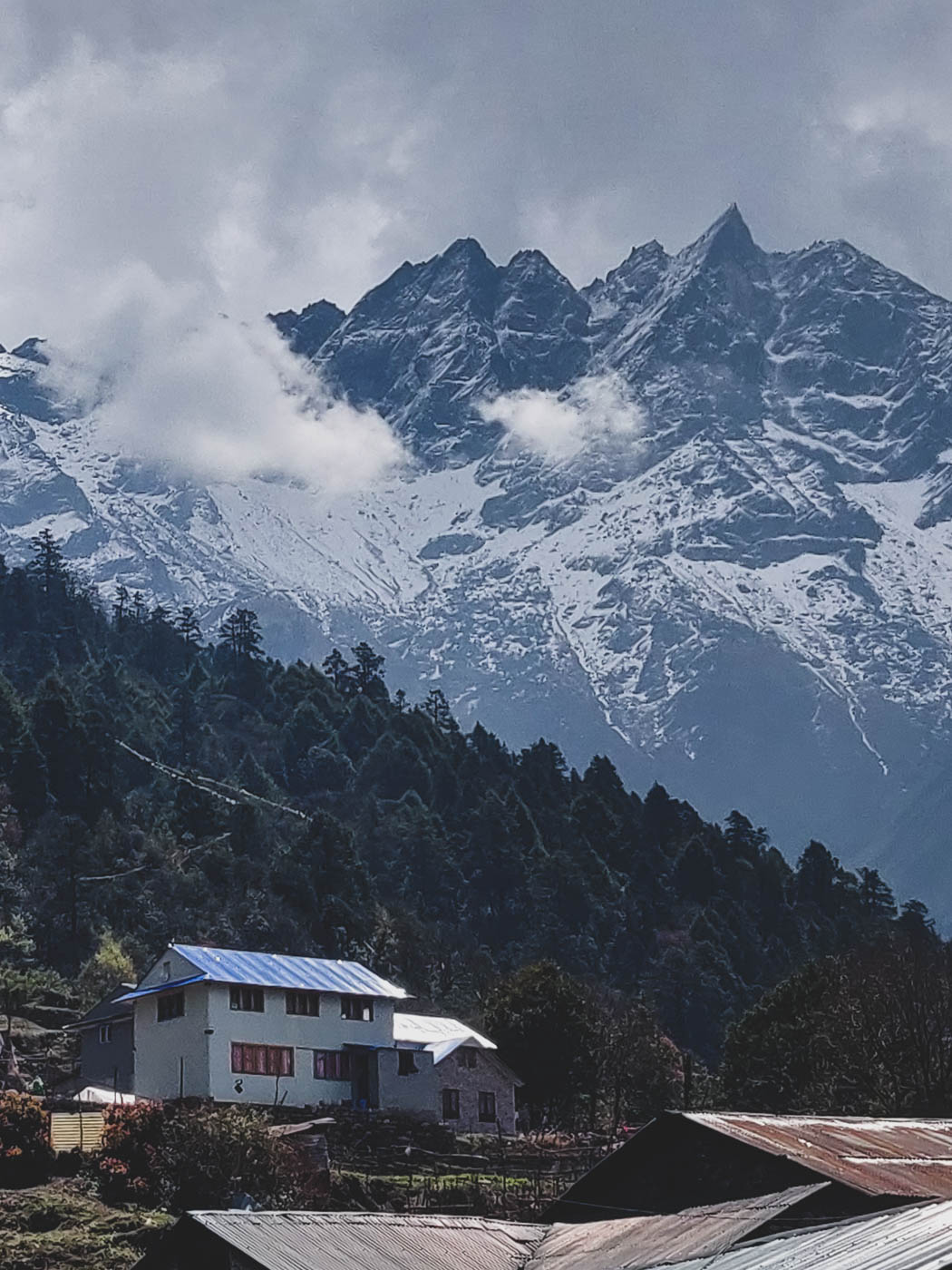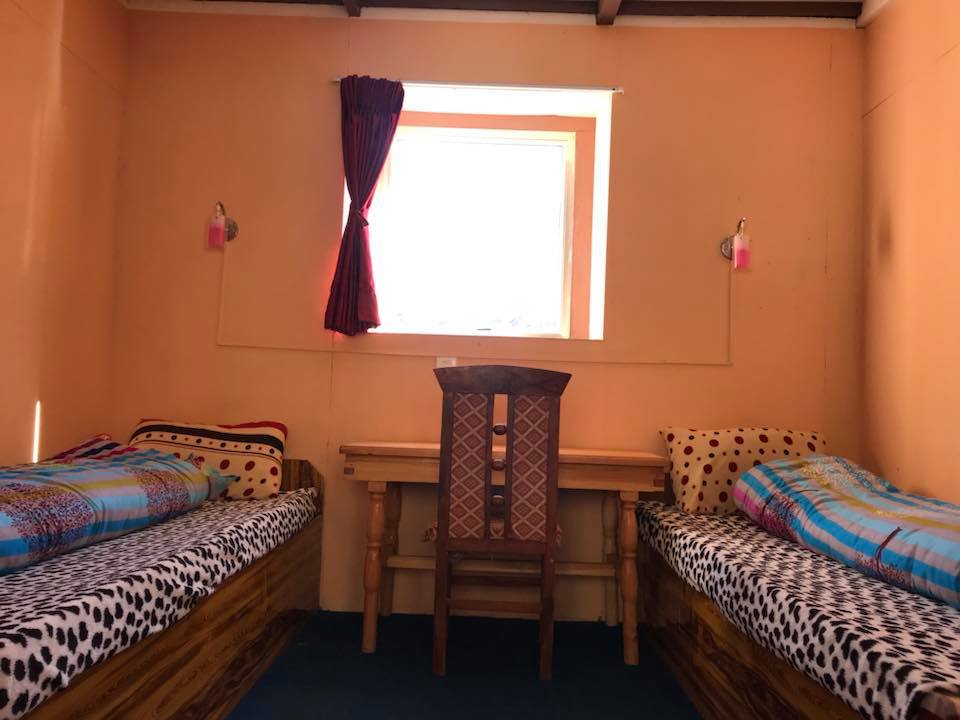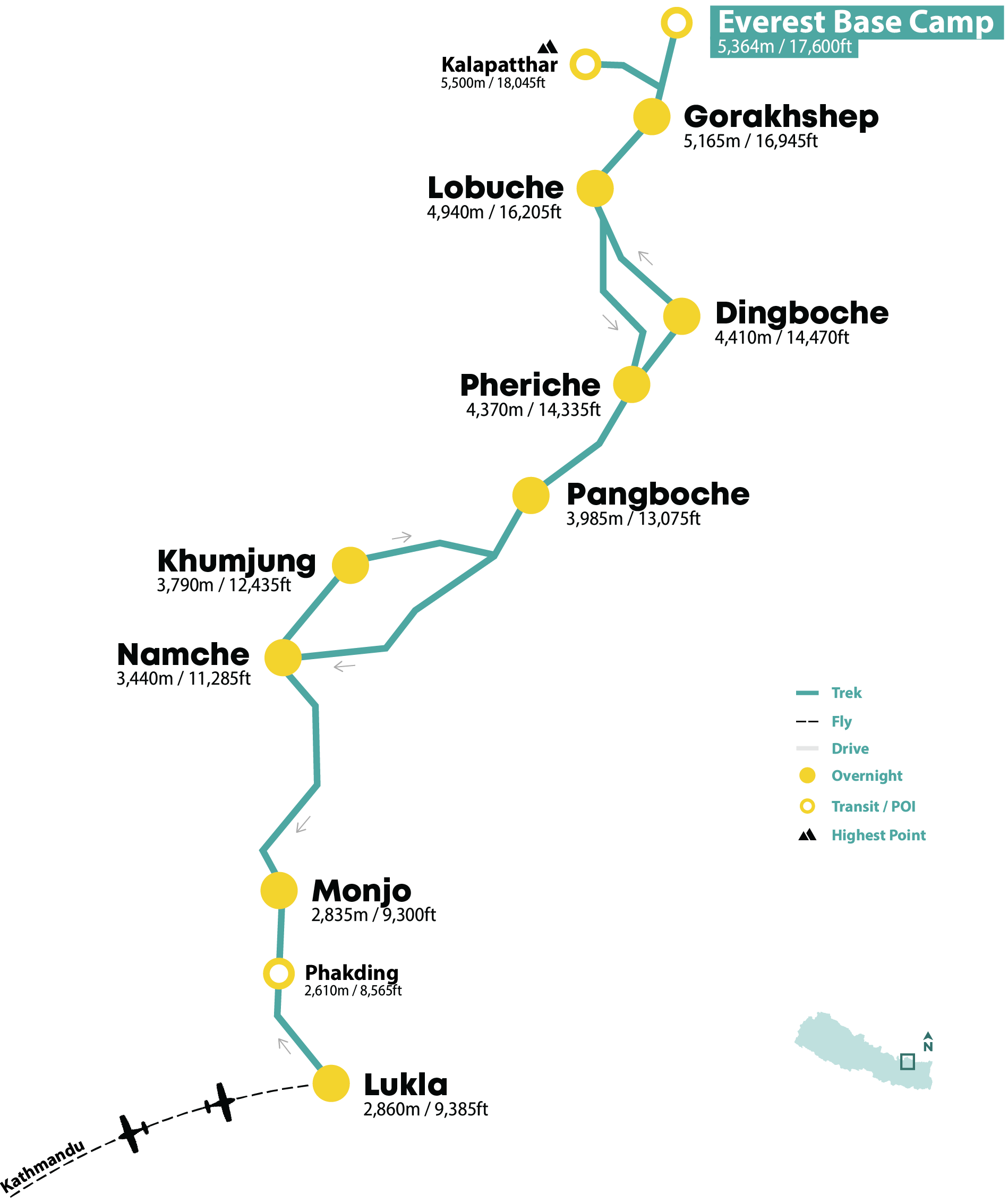|
Mountain Trek / Everest Region / Nepal Everest Base Camp TrekNext tentative Date: January 2, 2026 Available as a Private Trek on a date of your preference.
The crème de la crème of the Himalayas! Get an up close view of Everest and countless other Khumbu mountains on this incredible adventure. |
Overview
The Everest Base Camp Trek offers a breathtaking journey through Nepal’s iconic Khumbu region, where towering peaks, deep valleys, and glacial rivers create a dramatic and awe-inspiring landscape. From the bustling streets of Lukla to the serene, prayer-flag-lined monasteries of Tengboche, trekkers are immersed in the rich Sherpa culture, known for its warmth and spirituality. As you ascend through rhododendron forests and across high suspension bridges, you’ll encounter yak caravans, Himalayan tahr, and colorful pheaseants, adding a sense of wild adventure to the trek. The trails are challenging but rewarding, with each step revealing new vistas of snow-capped giants like Everest, Lhotse, Nuptse and Ama Dablam. Kalapatthar is another milestone and rewards with breathtaking sunrise and sunset views that illuminate the Himalayan giants in golden hues. Reaching Everest Base Camp itself, surrounded by the towering Himalayan peaks, is an unforgettable achievement that leaves trekkers with a profound sense of accomplishment and connection to the mountains.
Highlights
| Ultimate Adventure and Achievement: Reaching Everest Base Camp provides a profound sense of accomplishment and an unforgettable adventure. The trek is renowned for its spectacular vistas, physical challenge, and the camaraderie formed with fellow trekkers along the journey. | |
| Breathtaking Himalayan Scenery: The trek showcases stunning views of Everest and other towering peaks like Lhotse and Makalu. The landscape evolves from lush green valleys and terraced fields to dramatic, snow-covered mountains | |
| Sherpa Culture and Traditions: Experience the rich Sherpa culture through visits to traditional villages like Namche Bazaar and Dingboche, and interactions with locals. Explore Buddhist monasteries, such as Tengboche Monastery, and learn about Sherpa customs and festivals. | |
| Diverse Wildlife: Spot unique high-altitude wildlife, including Himalayan tahr, musk deer, and various bird species. In lower elevations, you might also see Langur monkeys and colorful pheasants. | |
| Varied Trails and Terrain: The trek features a mix of trail conditions, from gentle slopes to steep, rocky ascents. Key sections include the scenic trek through lush forests, crossing high suspension bridges, and navigating the rugged terrain approaching Base Camp. | |
| High-Altitude Flora: Traverse through different ecological zones, from vibrant rhododendron forests and pine woods at lower altitudes to sparse, alpine meadows and barren high-altitude landscapes as you ascend. | |
| Historic and Iconic Sites: Visit significant landmarks like the Hillary Bridge, the famous prayer flags at Everest Base Camp, and the ancient Tengboche Monastery, each offering unique cultural and historical significance. |
All our treks are carefully designed with proper acclimatization measures - comfortably paced walks and several acclimatization stops along the way. If you are a fit person with prior multiday trekking experience, the Everest Base Camp Trek is definitely for you!
The trails start off wide and eventually dwindle to rocky paths as you gain elevation. While the overall gradient is gradual, expect a few steep climbs, notably to Namche, Tengboche, and Kalapatthar. The average walking hours per day range between 5 to 7 hours. You will only be carrying a day bag as there will be porters to carry the rest of your stuff throughout the trek. For most of the trek, we stay at standard mountain lodges with clean and comfortable rooms, except in Lobuche and Gorakshep.
Best time to go
JanFebMarAprMayJunJulAugSepOctNovDec
JanFebMarAprMayJun
JulAugSepOctNovDec
| Group Sizepax | Fixed Departureprices per person | Regularprices per person |
| 2 | USD 1450 | USD 1525 |
| 3 | USD 1400 | USD 1425 |
| 4 - 7 | USD 1290 | USD 1365 |
| 8 & up | USD 1175 | USD 1200 |
Upcoming Fixed Departure: 02 Jan 2026
|
|
|
|
|
Prices valid until Dec 31st, 2026
Option to skip the drive to Manthali: You can take a shared helicopter flight from Kathmandu, avoiding the 4-hour drive each way to Manthali.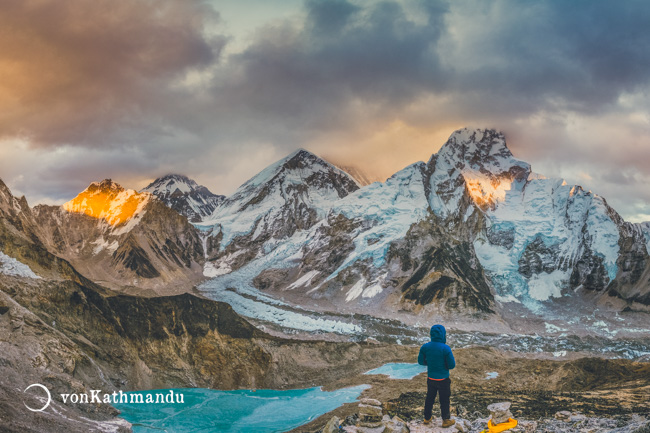
Incredible view from Kalapatthar
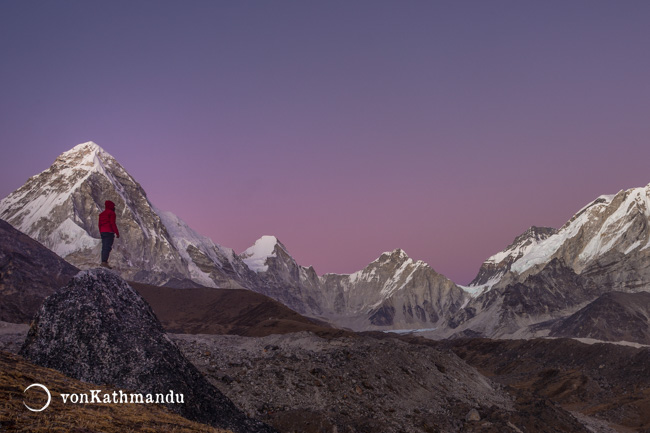
Evening in Kalapatthar, a favorite vantage point to see Khumbu mountains from
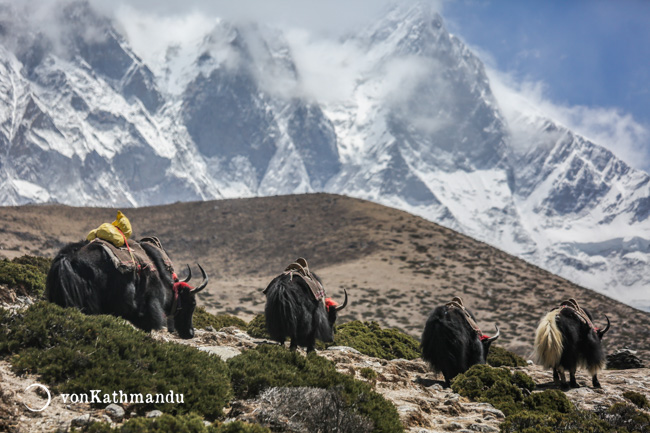
Yaks strolling with the giant Lhotse mountain in the backdrop
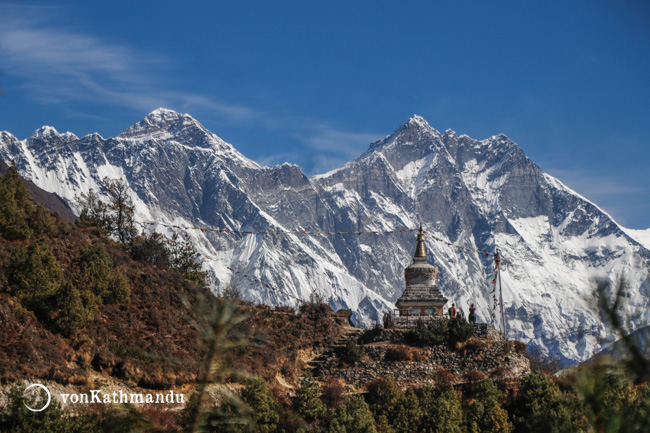
Gorgeous view of Everest and Lhotse seen from the walk from Namche towards Tengboche
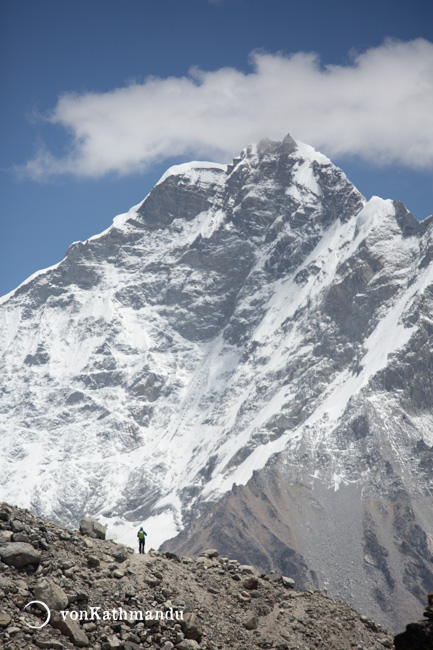
Giant mountains tower over you in all directions as you walk along Khumbu glacier
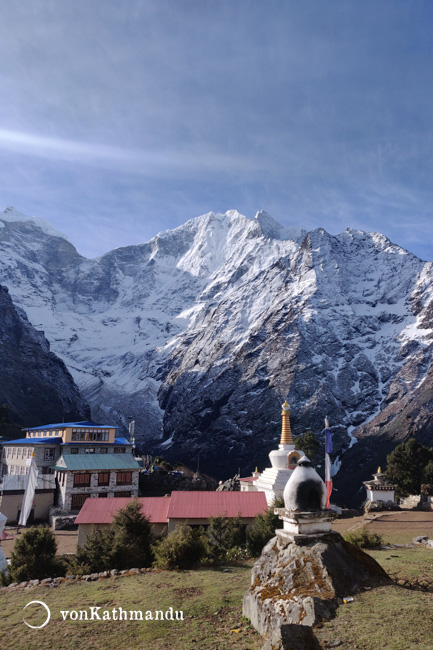
High snowcapped mountains overlook Tengboche
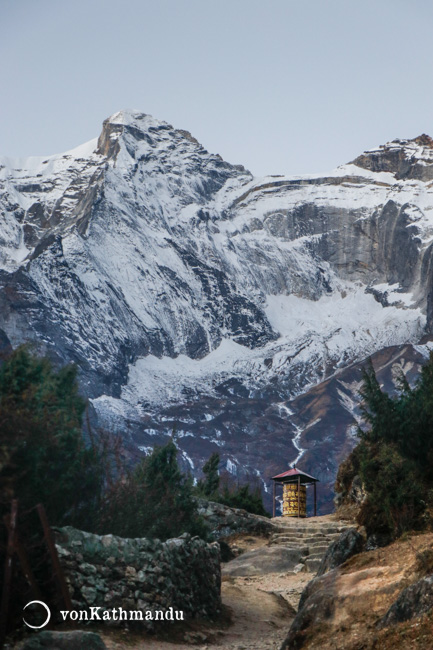
Buddhist prayer wheel in Namche outskirts beneath Kongde mountain
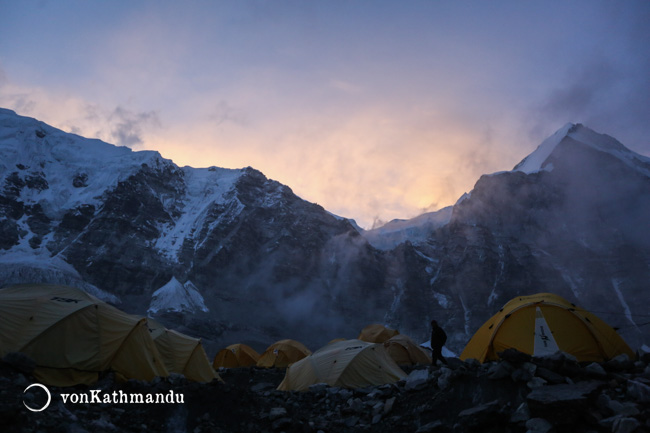
At the break of dawn
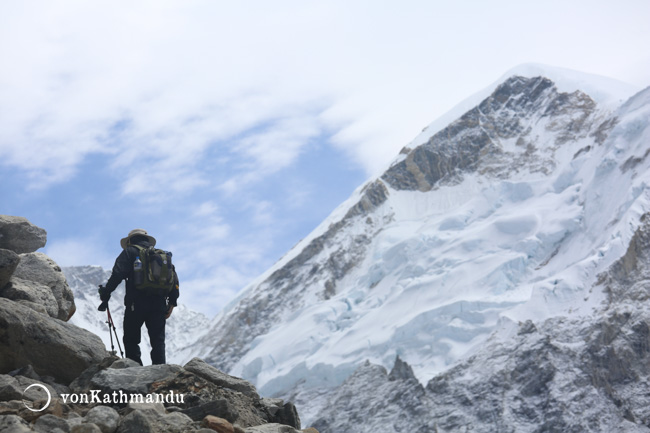
Trudging on towards Everest Base Camp
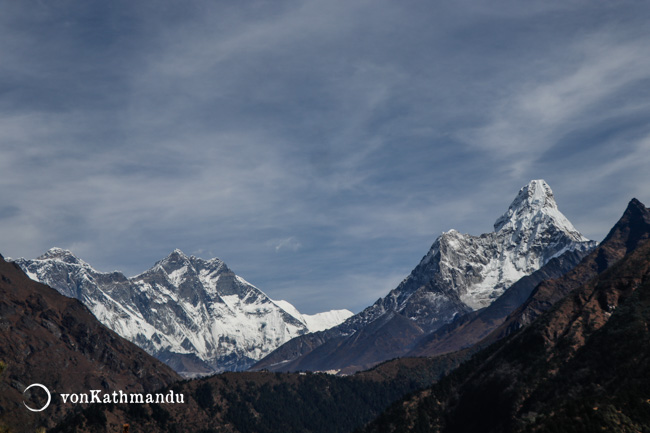
Everst, Lhotse and Amam Dablam as seen from Pangboche
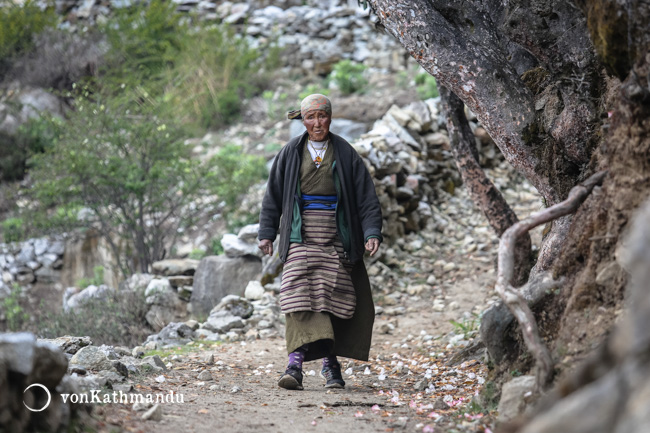
Lady in Khumbu donning traiditional Sherpa clothes
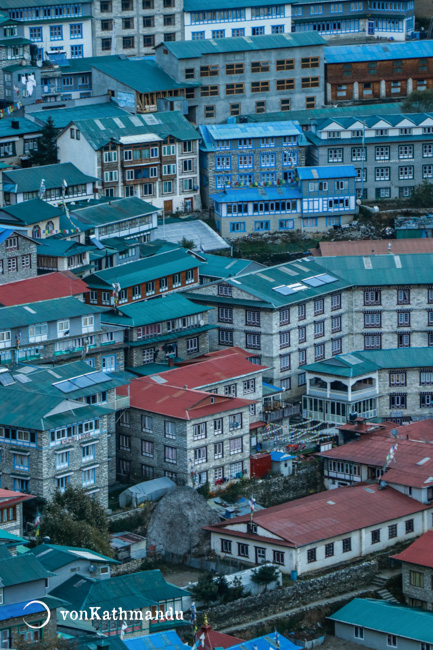
From a tiny hamlet, Namche has steady grown in the last couple of decades to become a sizeable and dense town
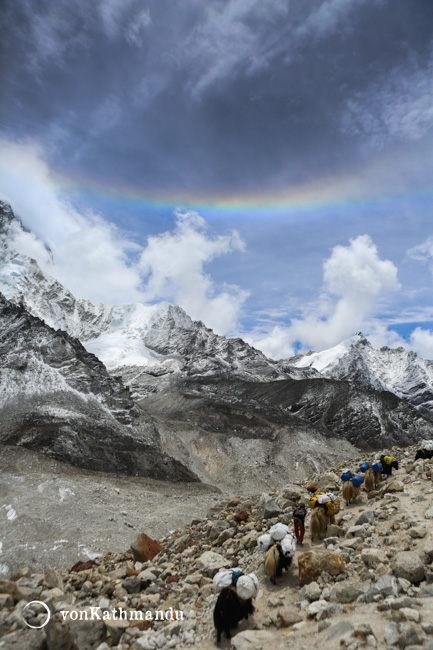
Yaks heading to lower altitudes, back from Everest Base Camp. Rrocky debris over Khumbu glacier can be seen between the mountains and yaks
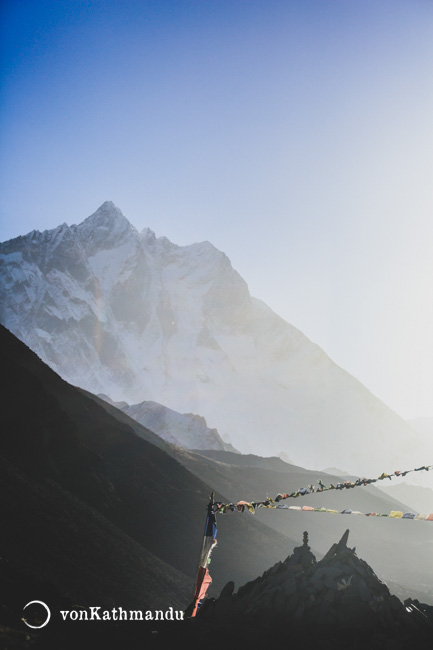
Fourth highest mountain in the world, Lhotse at 8516m
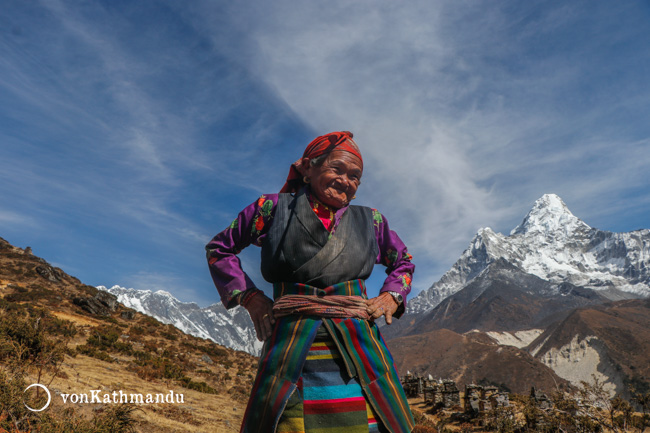
A lady in Pangboche clad in vibrant Sherpa attire called Bakkhu
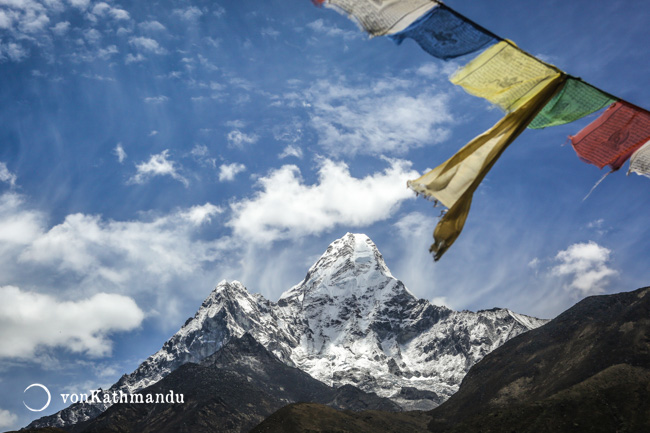
Ama Dablam mountain in her postcard shape, seen from Pangboche
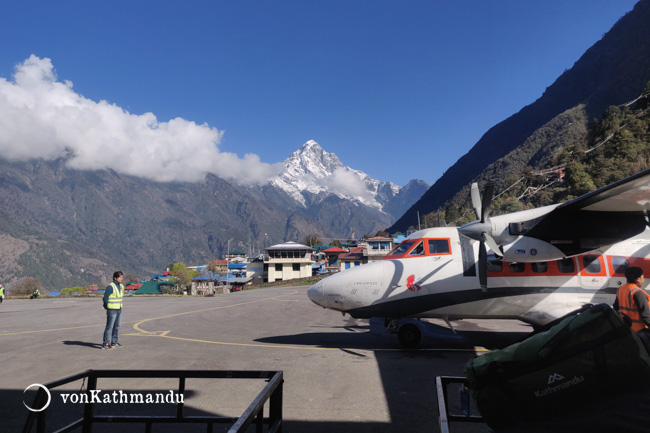
Perched on a hillside, Lukla Airpot is as thrilling as it is picturesque
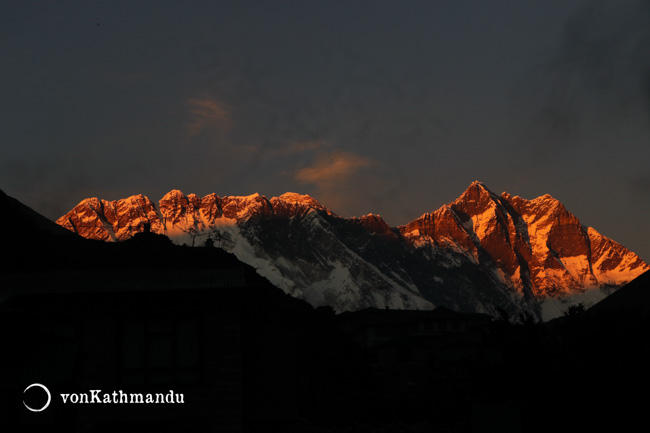
Everest and Lhotse at sunset
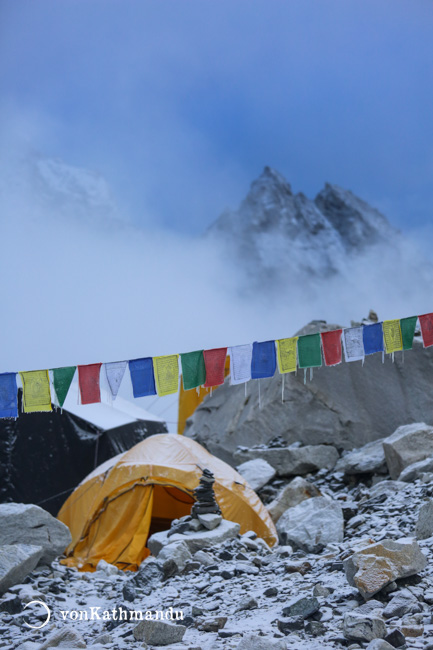
Everest Base Camp can get freezing cold, especially at night. Overnight stay in Base Camp is permitted only for people climbing Everest
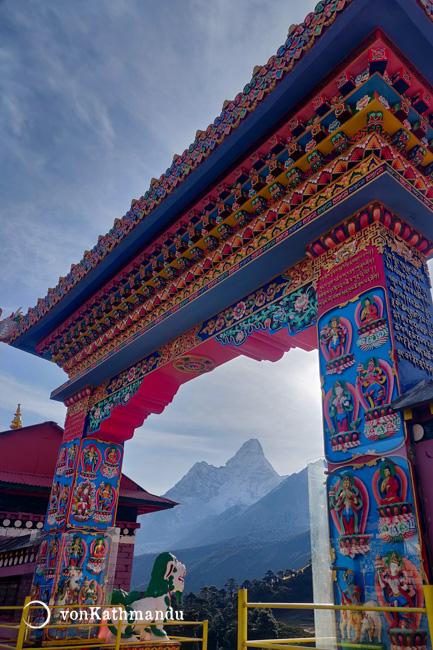
Ama Dablam seen through the ornately decorated gate of Tengboche Monastery
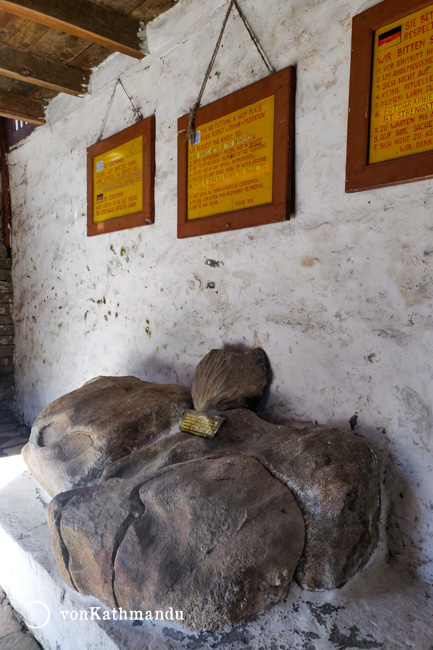
Tengboche Monastery has what is though to be a Yeti skull on display at its entrance
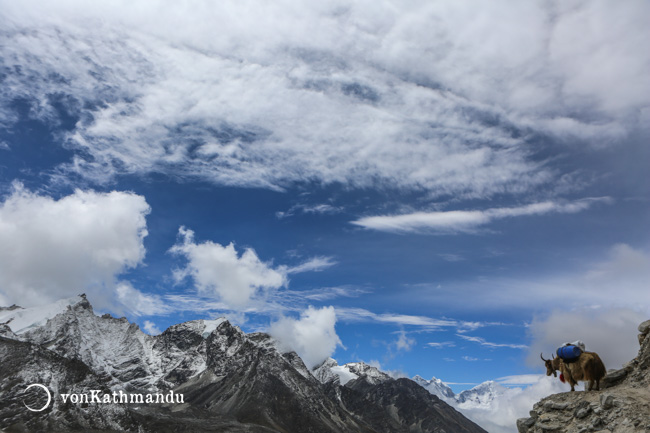
Khumbu mountains and a yak ferrying goods
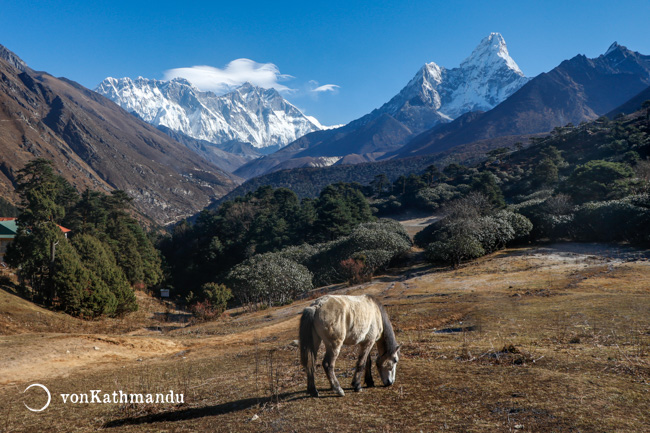
Horse grazing in Tengboche, on the horizon are Everest, Lhotse and Ama Dablam mountains
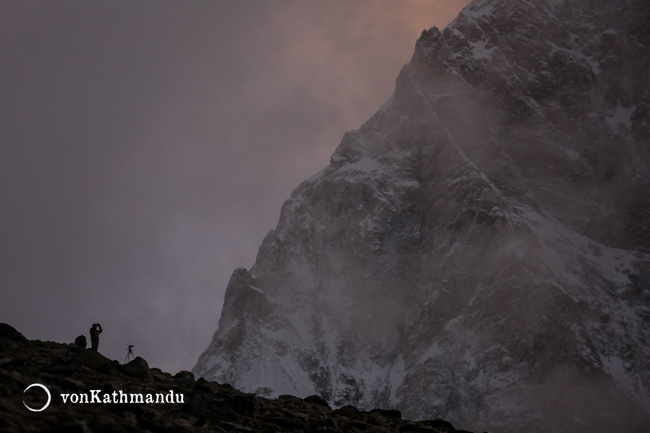
Waiting for the sun after a chilly morning climb to Kalapatthar
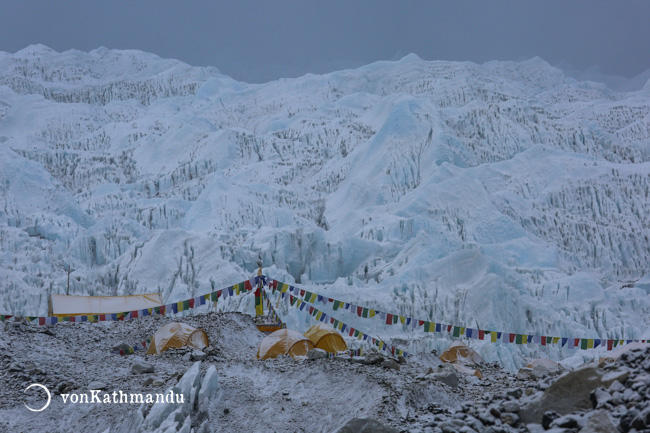
Camps set up by mountaineers in Everest Base Camp next to Khumbu glacier
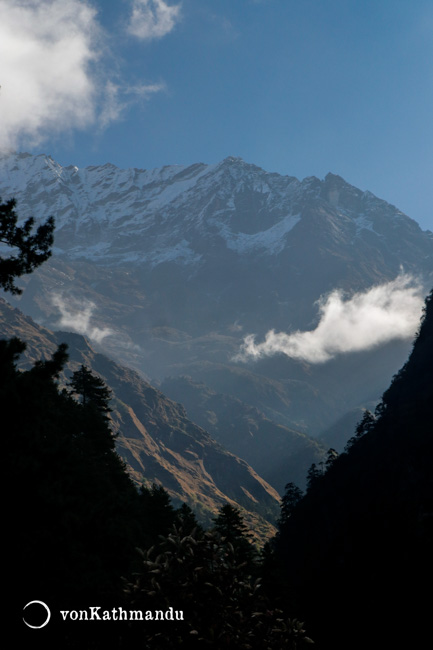
Towering mountains and deep valleys best describe Everest trek
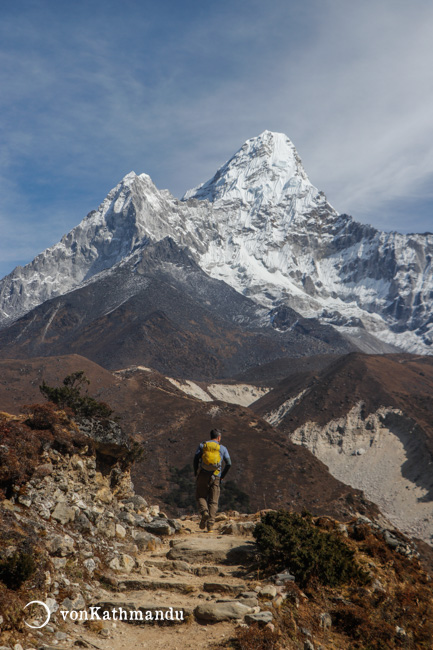
Strolling along the ridge in Pangboche
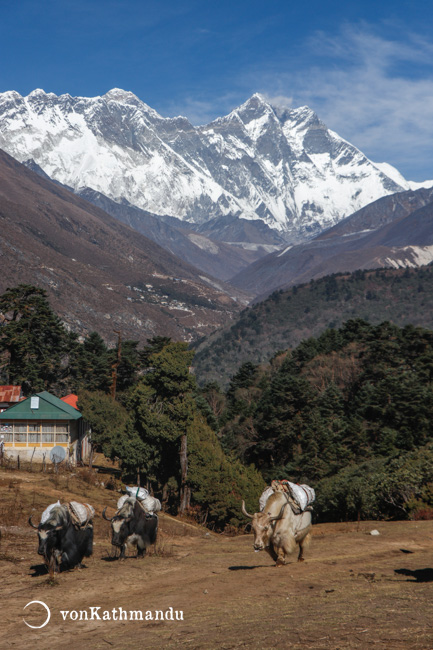
Yaks in Tengboche
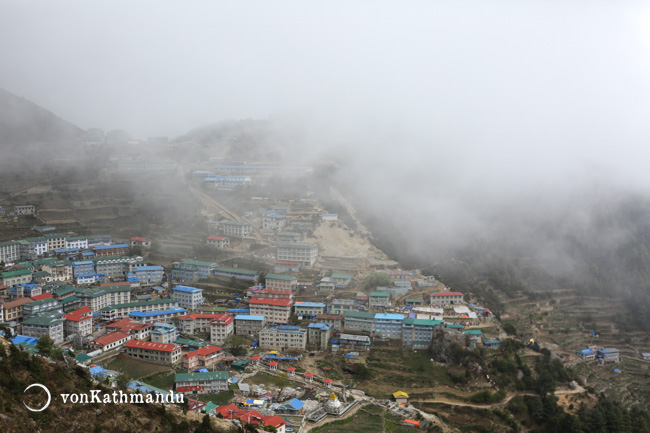
The ampitheatre of Namche Bazaar, often called the gateway to Everest
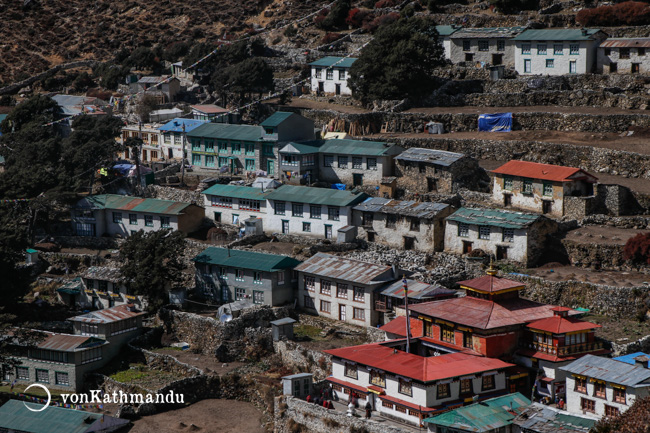
Traditional Sherpa houses of Upper Pangboche
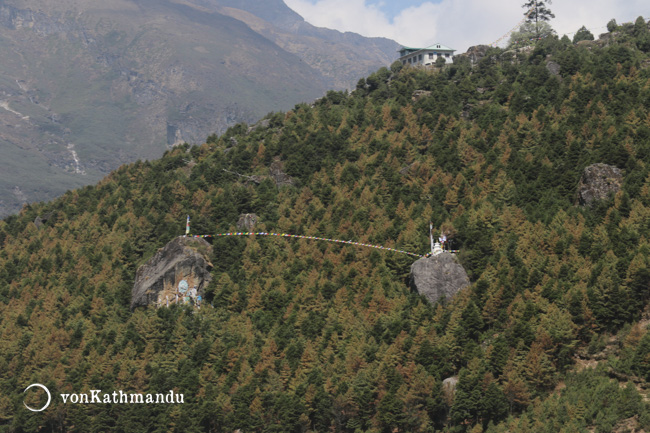
Boulders and big rocks are considered holy and worshipped by Buddhists and Hindus alike
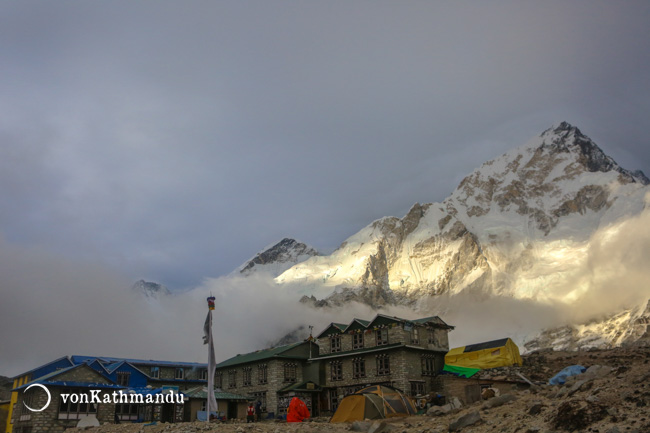
Dingboche is the last village before Everest Base Camp
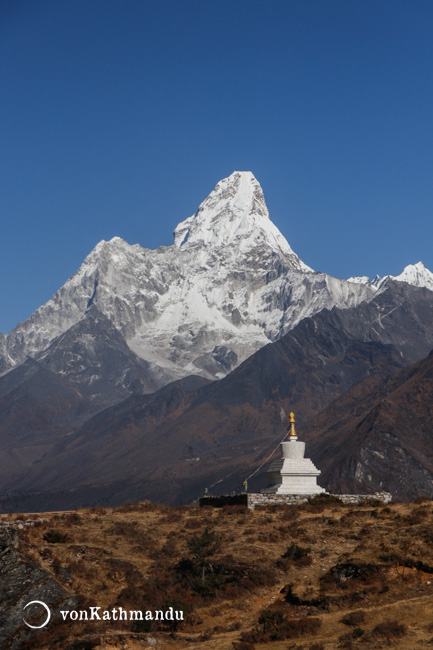
Chhorten, a Buddhist monument, seemingly mimics the color and shape of Ama Dablam
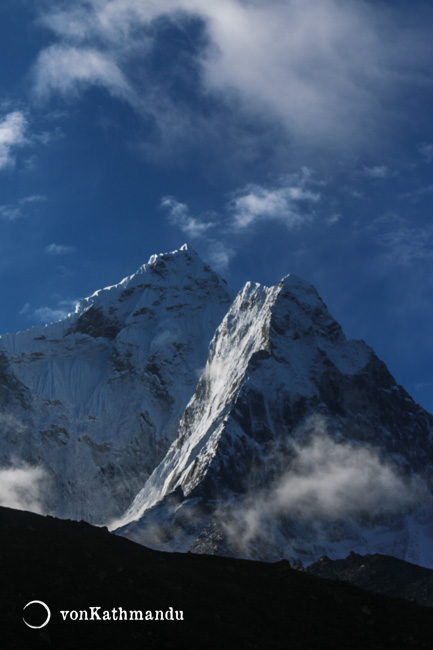
When you reach Dingboche, Ama Dablam looks vastly different and almost unrecognizable from her classic postcard shape
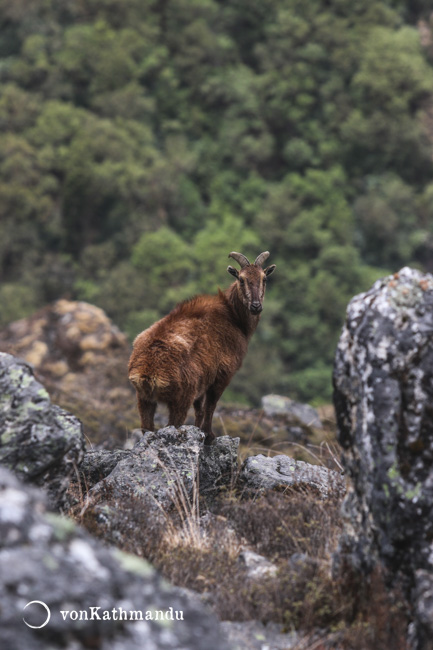
Himalayan Tahrs are not an uncommon sight on the trek
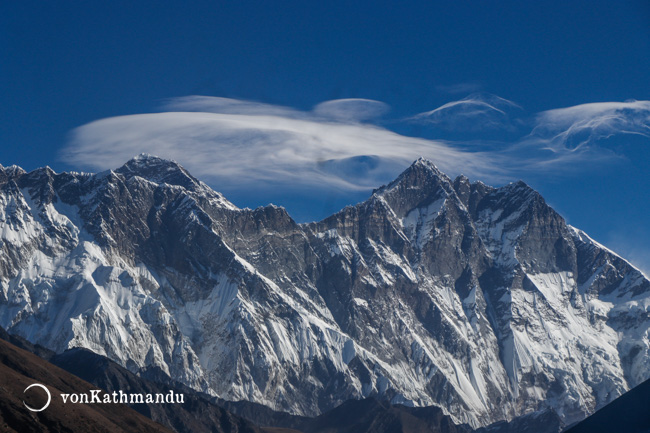
Lenticular clouds over Everest
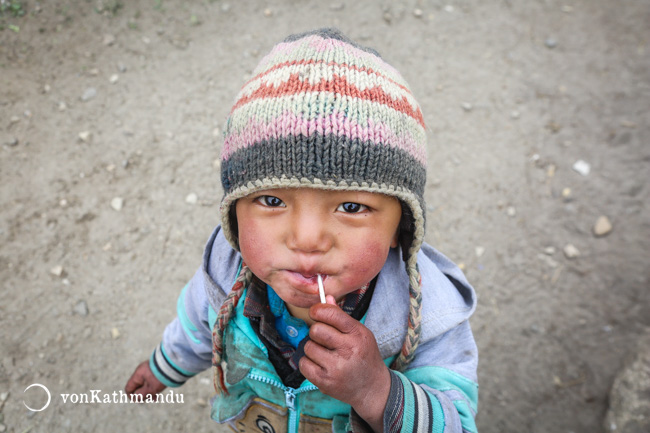
Little Sherpa kid. Cold wind and low moisture leads to rosy red cheeks in highlands
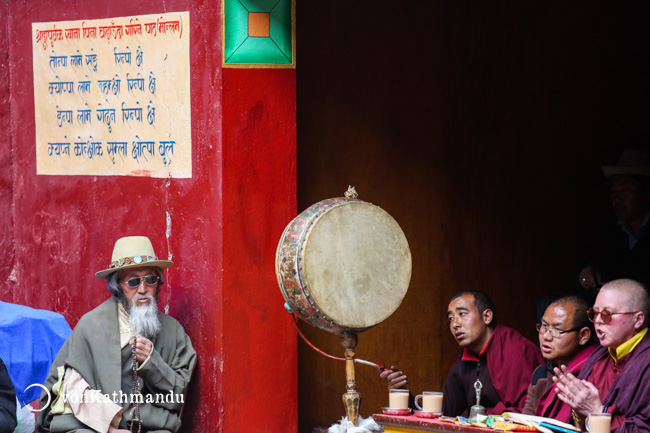
Buddhist monks at a festival in Namche
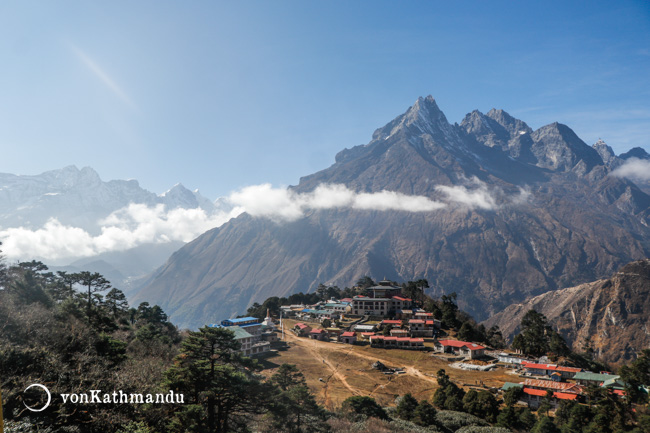
Tengboche village and monastery complemented by Kongde and Khumbila mountains
Itinerary
|
Day 1 |
Kathmandu - Manthali - Lukla - Monjo |
|
|
Day 2 |
Monjo - Namche |
|
|
Day 3 |
Namche - Khumjung |
|
|
Day 4 |
Khumjung - Pangboche |
|
|
Day 5 |
Pangboche - Dingboche |
|
|
Day 6 |
Dingboche |
|
|
Day 7 |
Dingboche - Lobuche |
|
|
Day 8 |
Lobuche - Gorakhshep - EBC - Gorakhshep |
|
|
Day 9 |
Gorakhshep - Kalapatthar - Pheriche |
|
|
Day 10 |
Pheriche - Namche |
|
|
Day 11 |
Namche - Lukla |
|
|
Day 12 |
Lukla - Manthali - Kathmandu |
|
|
Day 1 |
Kathmandu - Manthali - Lukla - Monjo |
|
|
Drive from Kathmandu to Manthali Airport 4 to 4.5 hrs An early morning drive from Kathmandu on winding roads takes us to Manthali, a tiny little town in Ramechhap district. Manthali Airport has been the gateway to Lukla since 2019. We start around 2 or 3 am in the morning following the Sunkoshi and Tamakoshi rivers, and reach Manthali right on time to catch the 6:30 or 7 am flight to Lukla.Note: All the flights to Lukla operate from Manthali Airport, Ramechhap during the months of March, April, May, October, November and December. |
|
|
Fly from Manthali to Lukla 20 mins A short, scenic and exhilarating mountain flight takes us from Manthali to Lukla, the gateway of Everest Region. |
|
|
Trek from Lukla to Monjo 5 to 6 hrs | 12 kms (7.5 mi) Highest point: Lukla at 2860m (9383ft) | Gain/drop: +604m/-638m (+1982ft/-2093ft) We meet the rest of our crew, arrange our baggages, have breakfast, and embark on a journey to Monjo, passing exciting suspension bridges and tiny village settlements following the Koshi river. If the flight is delayed causing late hike start, we will call it a day in Phakding (1-2hrs before Monjo). |
Meals Included: Breakfast
Accommodation: Mountain Lodge
|
Day 2 |
Monjo - Namche |
|
|
Trek from Monjo to Namche 4 to 6 hrs | 6 kms (3.5 mi) Highest point: Namche at 3440m (11286ft) | Gain/drop: +976m/-354m (+3202ft/-1161ft) We walk northward along the banks of Koshi and reach the entry point of Sagarmatha National Park, from where the gruelling uphill awaits before we reach the amphitheater town of Namche, nestled perfectly atop a hill. Spend the rest of the day exploring monasteries, mountain museums, tiny cafes and coffee bars. |
|
|
Explore Namche Spend the rest of the day exploring monasteries, mountain museums, tiny cafes and coffee bars. |
Meals Included: Breakfast
Accommodation: Mountain Lodge
|
Day 3 |
Namche - Khumjung |
|
|
Trek from Namche to Khumjung (Acclimatization) 4 to 5 hrs | 7 kms (4.5 mi) Highest point: Syangboche at 3880m (12730ft) | Gain/drop: +490m/-127m (+1608ft/-417ft) We take it slow and easy to the peaceful and serene settlement of Khumjung today. We stop by Hotel Everest View for a stunning view of the Everest mountain chain on the way. The green-roofed valley of Khumjung and Khunde offers several options to explore, including a monastery housing a (supposed) yeti scalp and a school established by Edmund Hillary. |
Meals Included: Breakfast
Accommodation: Mountain Lodge
|
Day 4 |
Khumjung - Pangboche |
|
|
Trek from Khumjung to Pangboche 5 to 6 hrs | 11 kms (7 mi) Highest point: Pangboche at 3985m (13074ft) | Gain/drop: +1025m/-876m (+3363ft/-2874ft) The walk on the first bit is a combination of minor uphills, downhills and flats with views of the picturesque Ama Dablam mountain staying with us, followed by an arduous uphill to Tengboche. After exploring the biggest monastery of the region, we trudge on and stop at Pangboche village, with equally impressive sights. |
Meals Included: Breakfast
Accommodation: Mountain Lodge
|
Day 5 |
Pangboche - Dingboche |
|
|
Trek from Pangboche to Dingboche 3 to 4 hrs | 6 kms (3.5 mi) Highest point: Dingboche at 4410m (14469ft) | Gain/drop: +477m/-67m (+1565ft/-220ft) We're greeted by the charismatic Ama Dablam in the morning. The trek to Dingboche today is only a few hours, but you will feel the altitude and notice a complete change in vegetation and landscape as we leave the tree line behind and walk the arid lands of Khumbu. We settle in a mountain lodge, our home for the following day. You can either choose to rest or take short hikes to nearby hills. |
Meals Included: Breakfast
Accommodation: Mountain Lodge
|
Day 6 |
Dingboche |
|
|
Acclimatization hike to Nangkartsang and rest in Dingboche 3 to 4 hrs | 5 kms (3 mi) Highest point: Nangkartsang mid way at 4800m (15748ft) | Gain/drop: +500m/-500m (+1640ft/-1640ft) In the morning, we take an acclimatization hike to the Nangkartsang peak or a hilltop before it. We are rewarded with the alluring face of Ama Dablam and severeal other mountains from this gorgeous vantage point. We slowly head down for lunch, and have the rest of the day for leisure. |
Meals Included: Breakfast
Accommodation: Mountain Lodge
|
Day 7 |
Dingboche - Lobuche |
|
|
Trek from Dingboche to Lobuche 4 to 5 hrs | 8 kms (5 mi) Highest point: Lobuche at 4940m (16207ft) | Gain/drop: +736m/-129m (+2415ft/-423ft) After a gradual uphill, we walk the wide barren flats until the white-washed rocky terrains show up. Lobuche memorial sits right where our short but tough uphill ends. We take a break here to admire the grandeur of the Himalayas and pay respect to all who lost their lives in the mountains. In no time, you’ll find yourself walking on lateral moraines of Khumbu glacier before you reach Lobuche. |
|
|
Acclimatization walk to glacier ridge 1 to 1.5 hrs | 1.5 kms (0.5 mi) Highest point: Glacier ridge at 4990m (16371ft) | Gain/drop: +50/-50m (+164ft/-164ft) We take a short walk up to the ridge with great view of the glacier and surrounding mountains. |
Meals Included: Breakfast
Accommodation: Mountain Lodge
|
Day 8 |
Lobuche - Gorakhshep - EBC - Gorakhshep |
|
|
Trek from Lobuche to Gorakhshep 2 to 3 hrs | 5 kms (3 mi) Highest point: Gorakhshep approach at 5190m (17028ft) | Gain/drop: +282m/-54m (+925ft/-177ft) We set off to Gorakhshep (the last settlement) on rocky trails shared by yak caravans ferrying goods. Khumbu glacier stays right next to you with tiny turquoise water bodies. |
|
|
Hike to Everest Base Camp, and back to Gorakhshep 3 to 5 hrs | 6.5 kms (3.5 mi) Highest point: Everest Base Camp at 5364m (17598ft) | Gain/drop: +231m/-231m (+758ft/-758ft) We leave our bags in the hotel (our home for the night), have a quick lunch, and set about to the grand prize - Everest Base Camp. Setting foot on the icy terrain surrounded by mountains on all sides is an ineffable feeling. Relish the moment by taking pictures with the massifs of Khumbu mountains on the backdrop before heading back. |
Meals Included: Breakfast
Accommodation: Mountain Lodge
|
Day 9 |
Gorakhshep - Kalapatthar - Pheriche |
|
|
Morning hike to Kalapatthar view point and back to Gorakhshep 3 to 4 hrs | 3.5 kms (2 mi) Highest point: Kalapatthar at 5500m (18045ft) | Gain/drop: +475m/-475m (+1558ft/-1558ft) A pre-dawn start to Kalapatthar as we set off on a grueling ascent to catch the first rays of golden light over Everest. Everest stands tall and enchanting with the other giants in the frame - Lhotse and Nuptse adjoining to the right and left from the viewpoint of Kalapatthar. Pumori perfects the frame with its imposing massif. |
|
|
Trek down to Pheriche 4 to 5 hrs | 11 kms (7 mi) Highest point: Gorakhshep at 5165m (16946ft) | Gain/drop: +87m/-995m (+285ft/-3264ft) There's a long day ahead of us. After descending and having breakfast in Gorakhshep, we make our way to Pheriche through the rocky terrains of Lobuche and Thukla. |
Meals Included: Breakfast
Accommodation: Mountain Lodge
|
Day 10 |
Pheriche - Namche |
|
|
Trek from Pheriche to Namche 6 to 7 hrs | 17 kms (10.5 mi) Highest point: Pheriche Pass at 4285m (14058ft) | Gain/drop: +696m/-1564m (+2283ft/-5131ft) We start early today to make it to Namche Bazaar before dark. The trails keep rolling up and down through valleys and villages you crossed on your way up. We stop in Tengboche for lunch and in Kyanjuma for a quick tea break. |
Meals Included: Breakfast
Accommodation: Mountain Lodge
Customization option
- Heli Exit from Pheriche to Kathmandu: You can take a heli out from Pheriche to Lukla or Kathmandu. This will shorten the trip by 2-3 days of walking back to catch your flight to Kathmandu.
|
Day 11 |
Namche - Lukla |
|
|
Trek from Namche to Lukla 6 to 8 hrs | 18 kms (11 mi) Highest point: Namche at 3440m (11286ft) | Gain/drop: +932m/-1560m (+3058ft/-5118ft) The final trekking day is also a long one. We leave Namche and take the same route back to Lukla. The team will gather to share laughs and maybe raise a glass or two before flying out of Lukla the next morning. We thank porters and assistant guide, and bid them farewell. |
Meals Included: Breakfast
Accommodation: Mountain Lodge
|
Day 12 |
Lukla - Manthali - Kathmandu |
|
|
Fly from Lukla to Manthali airport 20 mins An early breakfast and we fly out of Khumbu with glimpses of the mountains we saw from the trails. |
|
|
Drive from Manthali to Kathmandu 5 to 6 hrs With memories to cherish a lifetime, we hop on our car and drive back to Kathmandu on the same roads we took the first day. |
Meals Included: Breakfast
Mountain Lodge |
X Close Accommodation Popup
X Close Popup
Nepal
Mountain lodges are the basic accommodation set up by locals to cater to trekkers in the trails. The common features across all lodges are standard rooms, a spacious and heated dining hall, and a restaurant with a menu. The rooms in mountain lodges generally have two or three twin beds with a mattress and blanket. If you are used to sleeping warm, we highly recommend bringing your own sleeping bag and liner. Other amenities could be a table, hanger, and dustbin but do not expect to have charging ports and attached toilets in the rooms. Moreover, it is mandatory to have meals in the facility you’re staying at.
Room Amenities
| • | Shared Toilet |
Property Amenities
| • | Restaurant and Bar | • | Outdoor Seating | • | Mountain Views |
Mountain Lodge |
X Close Accommodation Popup
X Close Popup
Nepal
Mountain lodges are the basic accommodation set up by locals to cater to trekkers in the trails. The common features across all lodges are standard rooms, a spacious and heated dining hall, and a restaurant with a menu. The rooms in mountain lodges generally have two or three twin beds with a mattress and blanket. If you are used to sleeping warm, we highly recommend bringing your own sleeping bag and liner. Other amenities could be a table, hanger, and dustbin but do not expect to have charging ports and attached toilets in the rooms. Moreover, it is mandatory to have meals in the facility you’re staying at.
Room Amenities
| • | Shared Toilet |
Property Amenities
| • | Restaurant and Bar | • | Outdoor Seating | • | Mountain Views |
Mountain Lodge |
X Close Accommodation Popup
X Close Popup
Nepal
Mountain lodges are the basic accommodation set up by locals to cater to trekkers in the trails. The common features across all lodges are standard rooms, a spacious and heated dining hall, and a restaurant with a menu. The rooms in mountain lodges generally have two or three twin beds with a mattress and blanket. If you are used to sleeping warm, we highly recommend bringing your own sleeping bag and liner. Other amenities could be a table, hanger, and dustbin but do not expect to have charging ports and attached toilets in the rooms. Moreover, it is mandatory to have meals in the facility you’re staying at.
Room Amenities
| • | Shared Toilet |
Property Amenities
| • | Restaurant and Bar | • | Outdoor Seating | • | Mountain Views |
Mountain Lodge |
X Close Accommodation Popup
X Close Popup
Nepal
Mountain lodges are the basic accommodation set up by locals to cater to trekkers in the trails. The common features across all lodges are standard rooms, a spacious and heated dining hall, and a restaurant with a menu. The rooms in mountain lodges generally have two or three twin beds with a mattress and blanket. If you are used to sleeping warm, we highly recommend bringing your own sleeping bag and liner. Other amenities could be a table, hanger, and dustbin but do not expect to have charging ports and attached toilets in the rooms. Moreover, it is mandatory to have meals in the facility you’re staying at.
Room Amenities
| • | Shared Toilet |
Property Amenities
| • | Restaurant and Bar | • | Outdoor Seating | • | Mountain Views |
Mountain Lodge |
X Close Accommodation Popup
X Close Popup
Nepal
Mountain lodges are the basic accommodation set up by locals to cater to trekkers in the trails. The common features across all lodges are standard rooms, a spacious and heated dining hall, and a restaurant with a menu. The rooms in mountain lodges generally have two or three twin beds with a mattress and blanket. If you are used to sleeping warm, we highly recommend bringing your own sleeping bag and liner. Other amenities could be a table, hanger, and dustbin but do not expect to have charging ports and attached toilets in the rooms. Moreover, it is mandatory to have meals in the facility you’re staying at.
Room Amenities
| • | Shared Toilet |
Property Amenities
| • | Restaurant and Bar | • | Outdoor Seating | • | Mountain Views |
Mountain Lodge |
X Close Accommodation Popup
X Close Popup
Nepal
Mountain lodges are the basic accommodation set up by locals to cater to trekkers in the trails. The common features across all lodges are standard rooms, a spacious and heated dining hall, and a restaurant with a menu. The rooms in mountain lodges generally have two or three twin beds with a mattress and blanket. If you are used to sleeping warm, we highly recommend bringing your own sleeping bag and liner. Other amenities could be a table, hanger, and dustbin but do not expect to have charging ports and attached toilets in the rooms. Moreover, it is mandatory to have meals in the facility you’re staying at.
Room Amenities
| • | Shared Toilet |
Property Amenities
| • | Restaurant and Bar | • | Outdoor Seating | • | Mountain Views |
Mountain Lodge |
X Close Accommodation Popup
X Close Popup
Nepal
Mountain lodges are the basic accommodation set up by locals to cater to trekkers in the trails. The common features across all lodges are standard rooms, a spacious and heated dining hall, and a restaurant with a menu. The rooms in mountain lodges generally have two or three twin beds with a mattress and blanket. If you are used to sleeping warm, we highly recommend bringing your own sleeping bag and liner. Other amenities could be a table, hanger, and dustbin but do not expect to have charging ports and attached toilets in the rooms. Moreover, it is mandatory to have meals in the facility you’re staying at.
Room Amenities
| • | Shared Toilet |
Property Amenities
| • | Restaurant and Bar | • | Outdoor Seating | • | Mountain Views |
Mountain Lodge |
X Close Accommodation Popup
X Close Popup
Nepal
Mountain lodges are the basic accommodation set up by locals to cater to trekkers in the trails. The common features across all lodges are standard rooms, a spacious and heated dining hall, and a restaurant with a menu. The rooms in mountain lodges generally have two or three twin beds with a mattress and blanket. If you are used to sleeping warm, we highly recommend bringing your own sleeping bag and liner. Other amenities could be a table, hanger, and dustbin but do not expect to have charging ports and attached toilets in the rooms. Moreover, it is mandatory to have meals in the facility you’re staying at.
Room Amenities
| • | Shared Toilet |
Property Amenities
| • | Restaurant and Bar | • | Outdoor Seating | • | Mountain Views |
Mountain Lodge |
X Close Accommodation Popup
X Close Popup
Nepal
Mountain lodges are the basic accommodation set up by locals to cater to trekkers in the trails. The common features across all lodges are standard rooms, a spacious and heated dining hall, and a restaurant with a menu. The rooms in mountain lodges generally have two or three twin beds with a mattress and blanket. If you are used to sleeping warm, we highly recommend bringing your own sleeping bag and liner. Other amenities could be a table, hanger, and dustbin but do not expect to have charging ports and attached toilets in the rooms. Moreover, it is mandatory to have meals in the facility you’re staying at.
Room Amenities
| • | Shared Toilet |
Property Amenities
| • | Restaurant and Bar | • | Outdoor Seating | • | Mountain Views |
Mountain Lodge |
X Close Accommodation Popup
X Close Popup
Nepal
Mountain lodges are the basic accommodation set up by locals to cater to trekkers in the trails. The common features across all lodges are standard rooms, a spacious and heated dining hall, and a restaurant with a menu. The rooms in mountain lodges generally have two or three twin beds with a mattress and blanket. If you are used to sleeping warm, we highly recommend bringing your own sleeping bag and liner. Other amenities could be a table, hanger, and dustbin but do not expect to have charging ports and attached toilets in the rooms. Moreover, it is mandatory to have meals in the facility you’re staying at.
Room Amenities
| • | Shared Toilet |
Property Amenities
| • | Restaurant and Bar | • | Outdoor Seating | • | Mountain Views |
Mountain Lodge |
X Close Accommodation Popup
X Close Popup
Nepal
Mountain lodges are the basic accommodation set up by locals to cater to trekkers in the trails. The common features across all lodges are standard rooms, a spacious and heated dining hall, and a restaurant with a menu. The rooms in mountain lodges generally have two or three twin beds with a mattress and blanket. If you are used to sleeping warm, we highly recommend bringing your own sleeping bag and liner. Other amenities could be a table, hanger, and dustbin but do not expect to have charging ports and attached toilets in the rooms. Moreover, it is mandatory to have meals in the facility you’re staying at.
Room Amenities
| • | Shared Toilet |
Property Amenities
| • | Restaurant and Bar | • | Outdoor Seating | • | Mountain Views |
Customize this trip
Take a heli back.
For those short on time or looking to add an exhilarating experience of flying over the majestic Himalayas, you have the option to charter a private helicopter on the way down. Inquire for prices and options!
You can taking a helicopter flight back to Kathmandu either from Gorakshep (on Day 9) or Namche Bazaar (on Day 11).Kathmandu Hotel and Transfers
-
If you’d like us to organize airport transfers and arrange your stay in Kathmandu or any other cities, let us know. We’re happy to give you options based on your preference, and book them for you.
Here’s one of our popular 2 days add-on: USD 185 per person:
- Airport pick up and drop off, facilitated by an English-speaking representative
- 2 nights in a four-star hotel in Kathmandu (Hotel Shankar or similar) on bed & breakfast plan and twin-sharing basis
